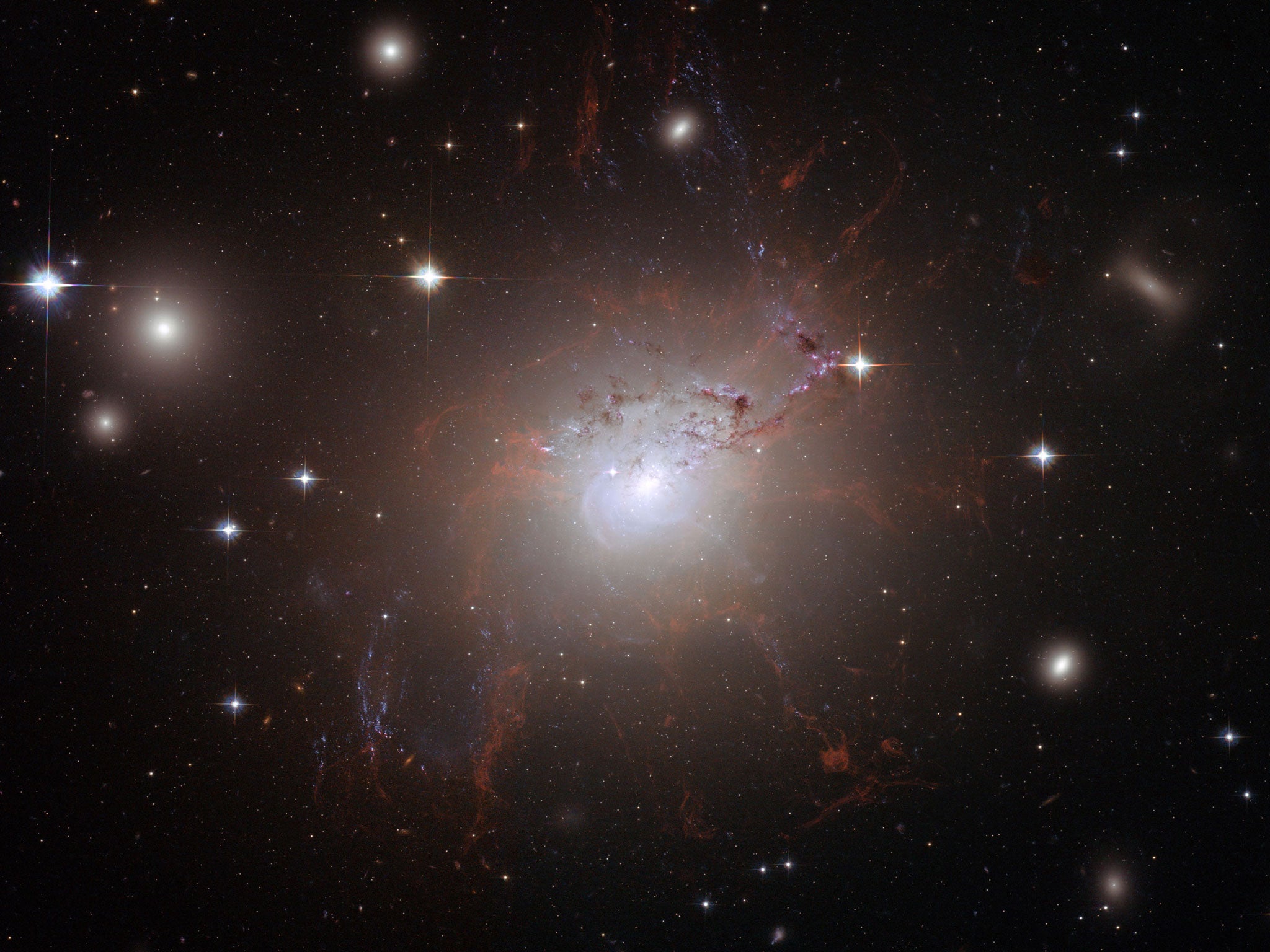Nobel Prize for Physics: How the winning work on neutrinos could change our understanding of the universe
Reseach by Takaaki Kajita and Arthur McDonald meant that the elusive particles could finally be placed within the known rules of physics

It is the second most common substance in the Universe and yet in the 65 years since it was discovered, the neutrino sub-atomic particle has proven to be remarkably elusive.
Now the two scientists who discovered the one sure thing we do know about the neutrino – that it is has mass – have won the 2015 Nobel Prize in Physics.
Takaaki Kajita of the University of Tokyo in Japan and Arthur McDonald of Queen’s University in Kingston, Canada share the 800,000 Swedish Crowns (£630,000) prize for showing that neutrinos, one of nature’s fundamental sub-atomic particles, oscillated between one form and another and that they therefore not the massless entities previously believed.
The discovery was described by the Nobel committee as “ground breaking” because it exposed the Standard Model of particle physics – which has survived repeated experimental challenges for more than 20 years – as flawed because it required neutrinos to be without mass.
“The experiments have thus revealed the first apparent crack in the Standard Model. It has become obvious that the Standard Model cannot be the complete theory of how the fundamental constituents of the Universe function,” the committee said.
Neutrinos are generated in nuclear reactors and are produced naturally in vast quantities in the hot nuclear core of stars as well as in the interactions of cosmic rays in space and in the atmosphere.
Only light photons – which are without mass – are more numerous. Neutrinos pervade the Universe, travelling as near the speed of light showing little or no interaction with other forms of matter.
In fact, neutrons are so non-reactive that they pass straight through solid objects the size of planets. Billions pass through each one of us every second and for more than half a century scientists thought they must be without any mass – how else to explain why they are so elusive?
However, Kajita and McDonald, working independently of one another and using different kinds of underground neutrino detectors – one in a zinc mine, the other in a nickel mine – discovered that neutrinos can change or oscillate between one of three different kinds of “flavours”, known as electron, muon and tau neutrino.
“The discovery has changed our understanding of the innermost workings of matter and can prove crucial to our view of the Universe,” said the Nobel committee in Stockholm.
In a series of independent experiments Kajita and McDonald showed that one flavour of neutrino can metamorphose into another under the rules of quantum physics, which stipulate that extremely small particles can act weirdly by being superimposed in two states at one time.
The fact that Kajita and McDonald showed beyond doubt that neutrinos can and do oscillate in this way also proved that the sub-atomic particles have mass, however small that may be, rather than being the massless entitities predicted by the Standard Model of physics.
In a phone call from his home in Canada to a press conference in Stockholm, Professor McDonald said he knew he had made a key discovery when he realised that the neutrinos he was studying streaming from the Sun were oscillating from one state to another.
“Yes, there was that Eureka! moment. It meant it had mass…now we’d like to know its absolute mass because he know the differences in mass between the different types of neutrinos but we don’t know the mass of the lightest of them,” Professor McDonald said.
Scientists estimate that a neutrino must be about a million times lighter than an electron, but an exact measure of a neutrino’s mass is now the subject of several research projects around the world using extremely sensitive equipment for detecting that rare moment when a passing neutrino interacts with matter, such as a molecule of heavy water contain the hydrogen isotope deuterium.
“The discovery of neutrino oscillation and that they have mass solves one of the long-standing problems in physics – that the Sun didn’t seem to be producing as many neutrinos as we thought it should,” said Professor Roy Sambles, president of the Institute of Physics.
“Now we know that they were switching between different types of neutrino. The neutrino had long been assumed to have no mass, so this was one of those discoveries that’s going to change how we see the Universe. It’s really quite inspiring,” Professor Sambles said.
Subscribe to Independent Premium to bookmark this article
Want to bookmark your favourite articles and stories to read or reference later? Start your Independent Premium subscription today.

Join our commenting forum
Join thought-provoking conversations, follow other Independent readers and see their replies